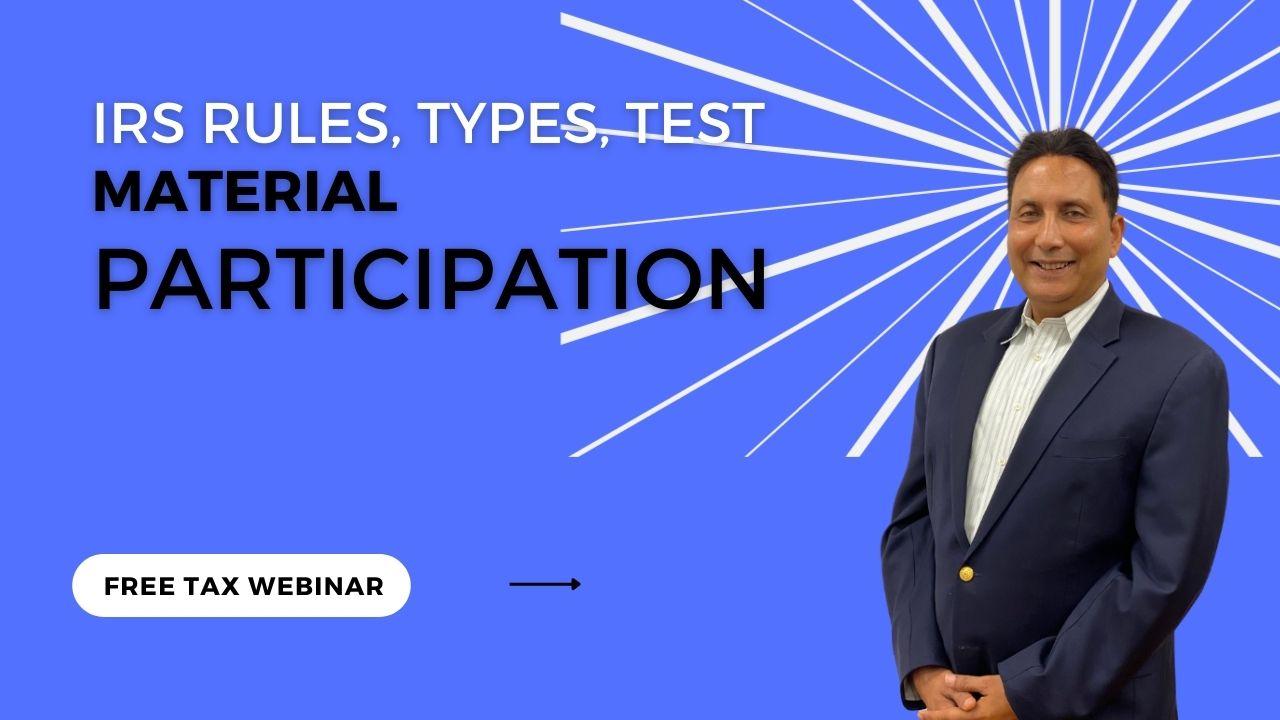
Material participation tests are a set of criteria used by the IRS to evaluate whether a taxpayer has materially participated in an income-producing activity. If the taxpayer passes one of the seven material participation tests, they are considered a material participant and can deduct the full amount of losses on their tax returns. Only one requirement of the seven tests needs to be met in order to qualify.
Let's explore what material participation is and how it can benefit real estate investors in reducing their taxes:
Material participation is a term used in Section 469 of the tax code to determine whether an activity is passive or non-passive for tax purposes.
There are two types of activities under this section: passive and non-passive.
If you materially participate in an activity, it is considered non-passive or "active." This means that the losses generated from this activity can offset your non-passive W-2 or business income, reducing your taxes.
However, if you don't materially participate, the activity is considered "passive," and the losses can generally only offset passive income, not active income.
The problem is that all rental activities are considered passive by default, and rental losses usually can't reduce your non-passive income.
By meeting the material participation requirements, real estate investors can turn their rental activities from passive to non-passive and use the losses to offset their non-passive income, saving thousands in taxes.
Material participation in an income-producing activity generally means that the taxpayer's involvement in the activity is regular, continuous, and substantial. Income or loss from such active participation is deductible, subject to at-risk rules or other limitations imposed by the IRC.
However, if the taxpayer's participation in the activity fails to meet at least one of the material participation tests, it is considered a passive activity. A passive activity is characterized by participation that is not regular, continuous, and substantial. Income or loss from passive participation is subject to passive activity rules that limit the deductibility of any passive loss.
The seven material participation tests are:
The taxpayer participates in the activity for more than 500 hours in the tax year: Example: John spent 600 hours managing his rental property in the tax year.
The taxpayer's participation in the activity constitutes substantially all the participation in the activity by anyone for the year: Example: Sarah owns a small business that she runs by herself. She satisfies this test because she is the only one participating in the activity.
The taxpayer participates in the activity for more than 100 hours during the tax year, and their participation is not less than the participation of any other individual: Example: Mike and his business partner both spend 150 hours each managing their business. Mike satisfies this test because he meets the minimum participation requirement and has not participated less than his partner.
The activity is a significant participation activity (SPA), and the sum of the taxpayer's participation in all SPAs in which they participate during the tax year exceeds 500 hours: Example: Jane is a real estate professional who actively manages several rental properties. She spends 400 hours managing one property and 150 hours managing another, exceeding the 500-hour requirement for all of her SPAs.
The taxpayer materially participated in the activity for any five of the prior ten tax years: Example: David has been running his small business for the past eight years and actively participated for more than five of those years.
The activity is a personal service activity, and the taxpayer materially participated in the activity for any three prior tax years: Example: Lisa is a self-employed consultant who provided services in the past three years.
Based on all of the facts and circumstances, the taxpayer participates in the activity on a regular, continuous, and substantial basis during the tax year: Example: Tom is a real estate investor who owns several properties that he rents out. Although he doesn't meet the minimum participation requirements of any of the other tests, he satisfies this test because he consistently devotes a substantial amount of time and effort to managing his properties.
Pros & Cons of Material Participation
Sure, here's an example of the pros and cons of material participation tests:
Pros:
Cons:
Q: How does the IRS differentiate between active and passive participation in generating income?
A: Active participation in an income-generating activity is considered to be regular, continuous, and substantial, and must pass the material participation tests set by the IRS. Passive participation in an income-generating activity is characterized as the opposite of active, as it lacks regularity, continuity, and substance.
Q: How can you verify material participation?
A: Taxpayers must keep records of their material participation hours in an activity and provide written evidence if required. Activities that an investor typically undertakes, such as reviewing stock charts, would not meet the participation burden unless the taxpayer is substantially involved in managing a particular activity.
Q: How does material participation affect taxes?
A: A taxpayer who materially participates in an activity can deduct the total amount of losses on their taxes. In contrast, under passive activity rules, a taxpayer who passively participates in an income-generating activity has limited deductibility of losses.
Here are some more examples of activities that are generally not considered material participation:
It's worth noting that whether an activity qualifies as material participation depends on various factors, including the nature of the activity, the amount of time spent on it, and the individual's role in the activity. It's always best to consult a tax professional for guidance on specific situations